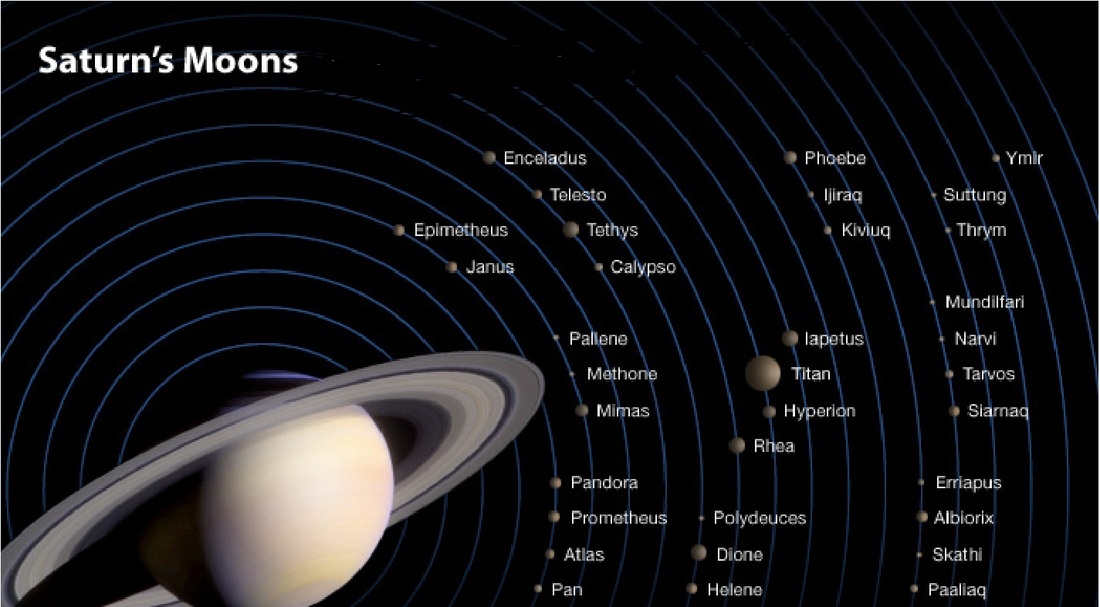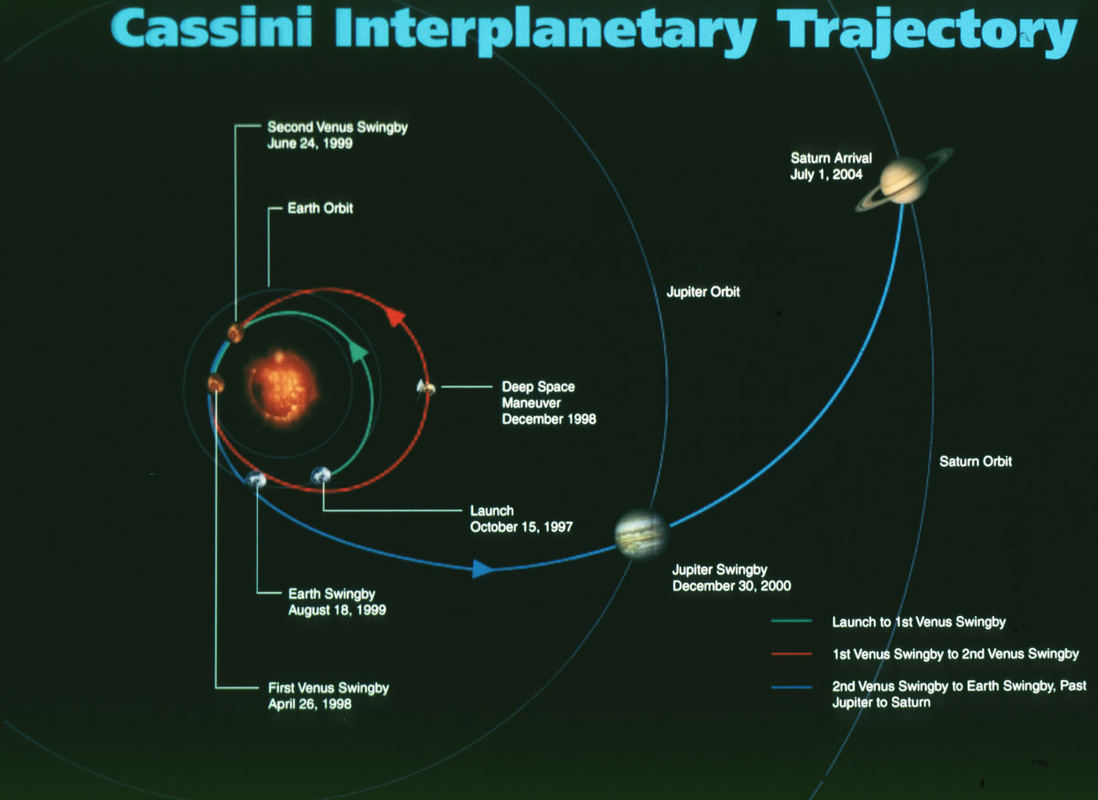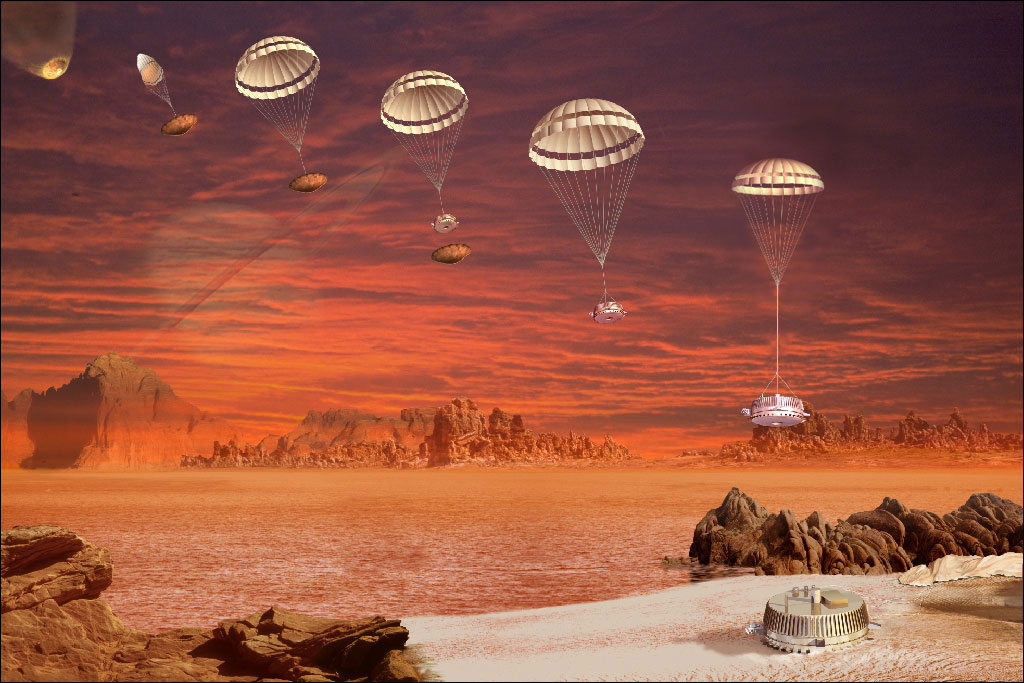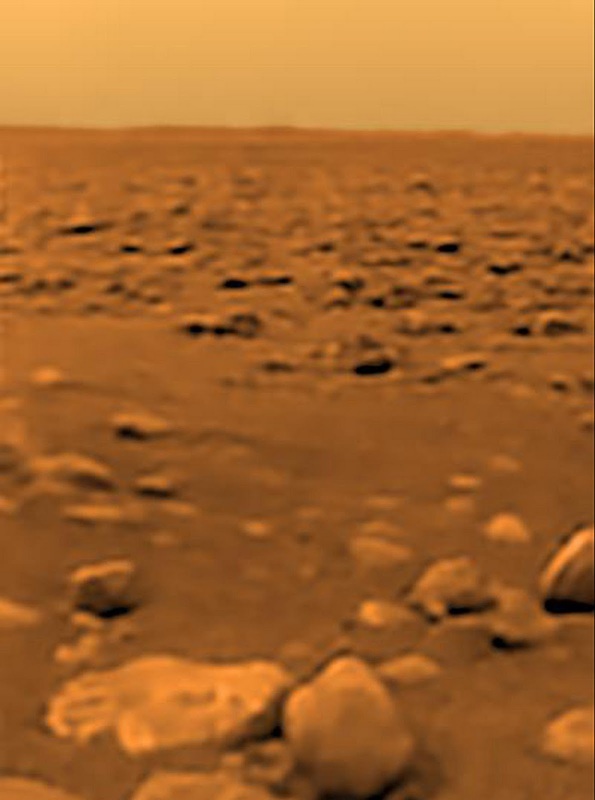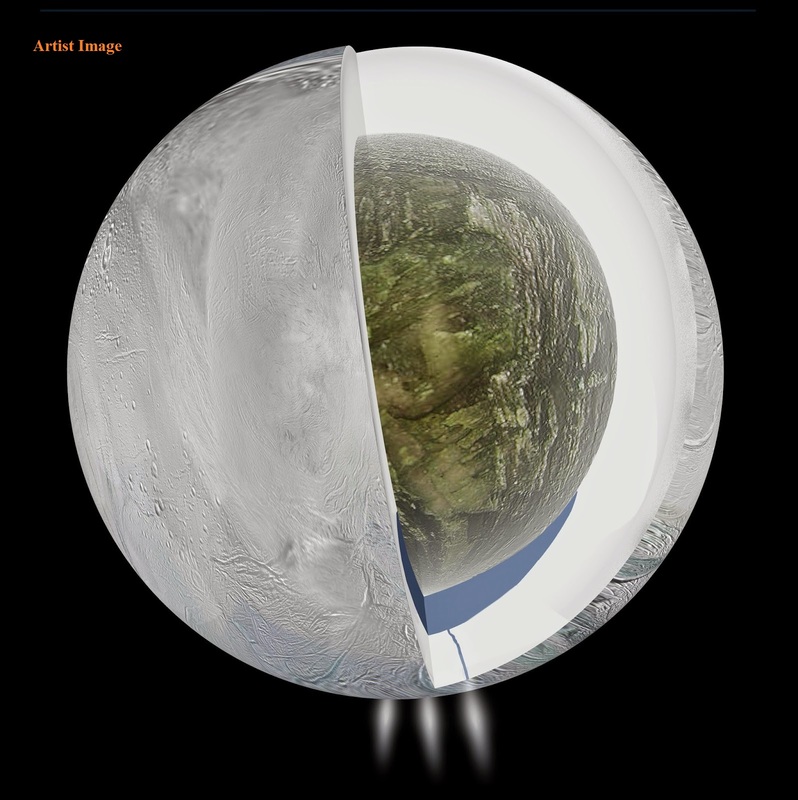Goldilocks Universe 6A - Cassini voyage to Saturn
Ask anyone with access to a telescope and they will easily pick Saturn (934 million miles from Earth) as their favorite planet. And with good reason for Saturn is encircled by majestic ring 65 feet thick and 41,000 miles wide. Saturn just like all the other planets in our solar systems has a story to tell us about our past and its role in creating our solar neighborhood that is just right for us to be here.
In 1979 Spacecraft Pioneer 11 flew by Saturn and provided our first close up glimpse of Saturn and its rings. This visit was followed up by Voyagers 1 and 2 in 1980-81 that brought attention to some of Saturn moons that right now number 35 and counting.
But the flagship of human exploration to Saturn was the Cassini-Huygens Spacecraft launched October 15, 1997, arriving at Saturn on July 1, 2004 after a 2.2 billion mile trek.
To view the Cassini-Huygens Spacecraft click on
www.explore-universe.weebly.com (under the tab: Cassini)
A marvelous 6 ton machine that traveled at one point 98,346 miles per hour relative to our Sun during it 6 year 9 months journey to Saturn. That trip included two gravity assist flybys of the Planet Venus, One gravity assist flyby of Earth and One gravity assist flyby of Jupiter.
In 1979 Spacecraft Pioneer 11 flew by Saturn and provided our first close up glimpse of Saturn and its rings. This visit was followed up by Voyagers 1 and 2 in 1980-81 that brought attention to some of Saturn moons that right now number 35 and counting.
But the flagship of human exploration to Saturn was the Cassini-Huygens Spacecraft launched October 15, 1997, arriving at Saturn on July 1, 2004 after a 2.2 billion mile trek.
To view the Cassini-Huygens Spacecraft click on
www.explore-universe.weebly.com (under the tab: Cassini)
A marvelous 6 ton machine that traveled at one point 98,346 miles per hour relative to our Sun during it 6 year 9 months journey to Saturn. That trip included two gravity assist flybys of the Planet Venus, One gravity assist flyby of Earth and One gravity assist flyby of Jupiter.
What started out as four year exploratory mission of Saturn and its Moons has now turned into a 10 year Science Study of our second largest planet and its Moons and it’s not over yet! The Cassini Spacecraft is still working great; its mission has been extended to 2017.
If you are wondering why the Spacecraft is named Cassini-Huygens, it’s because the Spacecraft is really two Ships. Cassini is the mother ship and Huygens is a small attached probe that landed with a parachute on Saturn’s largest moon Titan January 14, 2005. Titan’s diameter is 3,200 miles as compared to earth’s which is 7,926 miles.
If you are wondering why the Spacecraft is named Cassini-Huygens, it’s because the Spacecraft is really two Ships. Cassini is the mother ship and Huygens is a small attached probe that landed with a parachute on Saturn’s largest moon Titan January 14, 2005. Titan’s diameter is 3,200 miles as compared to earth’s which is 7,926 miles.
As Huygens probe was landing, its instruments analyzed the compositions of Titan’s atmosphere to be 95% Nitrogen similar to earth’s atmosphere, with 5% Methane that included small amounts of carbon rich compounds that are the building blocks of amino acids necessary for the formation of life. Could this be a frozen snapshot of our early Earth before living things began pumping oxygen into our atmosphere?
Some of these organic compounds are indicators of organic life. On Earth, Methane in the atmosphere is a by-product of metabolism of living organisms and is replenished by those organisms. But on Titan the Methane in the atmosphere is being continuously replenished by rivers and lakes of liquid ethane and methane near Titan’s North Pole.
Planetary Scientists believe that Titan’s current atmosphere may be very similar to Earth’s atmosphere during its formation billions of years ago. But because of the currently extreme cold (-180C degree), liquid water cannot exist on Titan’s surface, but it’s believed that there is an ocean of liquid water and ammonia about 60 miles beneath the surface.
After landing on Titan’s surface, the Huygens probe continued to take atmospheric readings and pictures for about an hour before it went silent. One of the pictures of Titan’s surface shows rocks composed of water ice that resemble river rocks found along our lakes and rivers.
Some of these organic compounds are indicators of organic life. On Earth, Methane in the atmosphere is a by-product of metabolism of living organisms and is replenished by those organisms. But on Titan the Methane in the atmosphere is being continuously replenished by rivers and lakes of liquid ethane and methane near Titan’s North Pole.
Planetary Scientists believe that Titan’s current atmosphere may be very similar to Earth’s atmosphere during its formation billions of years ago. But because of the currently extreme cold (-180C degree), liquid water cannot exist on Titan’s surface, but it’s believed that there is an ocean of liquid water and ammonia about 60 miles beneath the surface.
After landing on Titan’s surface, the Huygens probe continued to take atmospheric readings and pictures for about an hour before it went silent. One of the pictures of Titan’s surface shows rocks composed of water ice that resemble river rocks found along our lakes and rivers.
But this is where the similarities end. On earth liquid water dominates our planet. On Titan, the Cassini Spacecraft data points to rivers and lakes made up of liquid ethane and methane. Earth’s crust contains silicate rock, while Titans is made up of frozen water ice. Instead of dirt, Titan surface is made up of dark hydrocarbon sand dunes. On Earth, volcanoes spew lava, but on Titan they spew very cold ice.
While the data from Cassini and the Huygens probe is continuously being analyzed, lots of questions about Titan’s atmosphere, hydrocarbon surface, and ocean beneath the surface still need be answered. Titan is mysterious place that will require another Spacecraft visitor from earth.
One of amazing features of the Cassini Spacecraft is its ability to change its orbit of Saturn and reposition itself to get close to Saturn’s moons and also study Saturn from different angles. Gravity assists from Saturn’s moons, especially Titan, make this possible. A good example of this is the flyby of Saturn moon Enceladus (diameter = 310 miles compared to Earth’s moon diameter = 2,160 miles).
In 2012 Cassini came as close as 60 miles to Saturn’s moon Enceladus. It was greeted by an Old Faithful like geysers (Yellowstone National Park) erupting plumes of water-ice from giant fractures on the South Pole of Enceladus. The source of this water-ice is probably an Ocean beneath the surface ice.
While the data from Cassini and the Huygens probe is continuously being analyzed, lots of questions about Titan’s atmosphere, hydrocarbon surface, and ocean beneath the surface still need be answered. Titan is mysterious place that will require another Spacecraft visitor from earth.
One of amazing features of the Cassini Spacecraft is its ability to change its orbit of Saturn and reposition itself to get close to Saturn’s moons and also study Saturn from different angles. Gravity assists from Saturn’s moons, especially Titan, make this possible. A good example of this is the flyby of Saturn moon Enceladus (diameter = 310 miles compared to Earth’s moon diameter = 2,160 miles).
In 2012 Cassini came as close as 60 miles to Saturn’s moon Enceladus. It was greeted by an Old Faithful like geysers (Yellowstone National Park) erupting plumes of water-ice from giant fractures on the South Pole of Enceladus. The source of this water-ice is probably an Ocean beneath the surface ice.
The water-ice plumes contain several gases: Carbon dioxide, methane, ammonia, and nitrogen. This leads to speculations that there may be some form of life in Enceladus's Ocean. Because Cassini's mission has been extended to 2017, more flybys and study of Enceladus are being currently planned.
